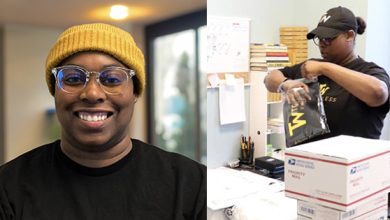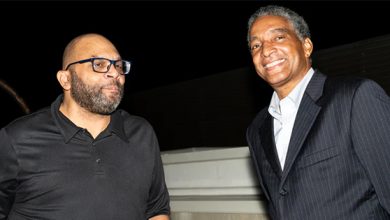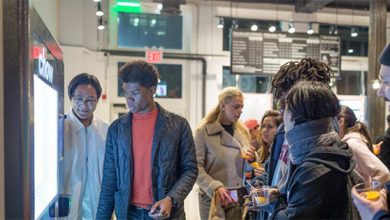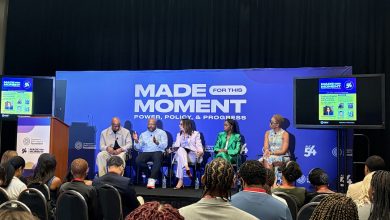Why Essence Fest Is The Ultimate Curator Of Black Joy
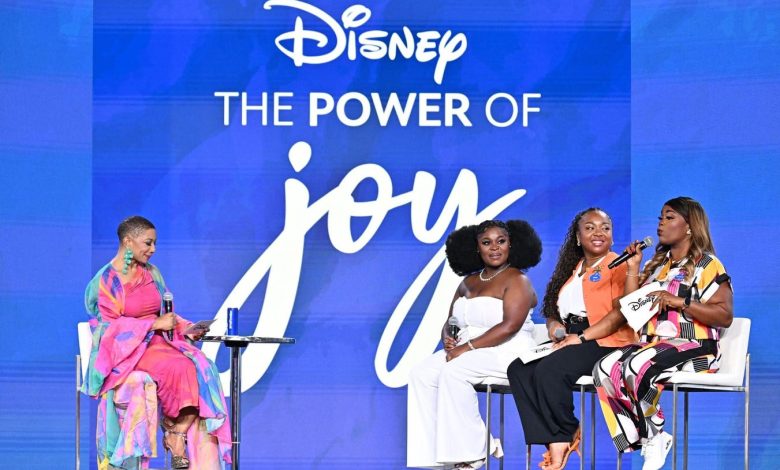
A view of the audience during the ESSENCE Festival of Culture presented by Coca-Cola at Caesars … More
On a sweltering July weekend in New Orleans, the Ernest N. Morial Convention Center hums with more than just music. Rows of Black-owned brands stretch through the SOKO MRKT pavilion, creators pitch digital campaigns upstairs at GU Creators House and panel stages echo with conversations on venture capital, equity and innovation. This year’s lineup—featuring R&B legends, Afrobeats stars and hip-hop pioneers across three nights—demonstrates the festival’s curation of Black music spanning genres and time. This is the ESSENCE Festival of Culture, presented by Coca-Cola—30 years strong and now, arguably, one of the most sophisticated platforms for cultural storytelling in the digital economy. Here, Black women aren’t just attendees; they control the narrative, drive conversations and redefine what influence looks like on their terms.
That centering of Black women’s leadership has informed the brand’s business model, and as ESSENCE evolved, so did its ability to attract corporate partners who recognize both the cultural capital and economic force the festival represents.
Corporate partnerships have helped scale Essence Fest into a global force, bringing the celebration to a broader stage without losing its soul. Brands like Coca-Cola and SheaMoisture have long been part of that growth story. However, in today’s climate, sponsorships are often perceived as endorsements in the public eye, and this is why Target’s presence on the list of sponsors at the event sparked conversation this year. After the company publicly scaled back its DEI initiatives, some festivalgoers and observers questioned the optics of its continued alignment with a space so dedicated to Black affirmation. ESSENCE, which had a long-standing sponsorship contract with Target, found itself in a difficult position that required balancing a long-term contract with the evolving expectations of its primary market. Despite the pushback, Essence Fest has developed a sustainable approach to coding Black joy into scalable formats, from social reach to venture capital returns. At its core, Essence Fest’s innovation is how it treats Black joy, not as an atmosphere, but as design.
That same commitment to curating Black joy is what Anthony Anderson says made Black-ish resonate for nearly a decade. “We pulled back the veil on our existence,” he said. “So others could understand what was real for us.” At Essence Fest, that same ethos is on full display. From panel stages to comedy sets, the stories told here are layered, instructive and deeply joyful. “We told stories, started revolutions, fought—all through laughter,” Anderson added. It’s that combination of cultural truth and creative force that continues to inspire Essence Fest, not just as a celebration, but as a movement. This view of storytelling extends to the festival’s broader philosophy.
Entertainment industry veteran Stephanie Mills put it simply: “Black joy is the only joy. We are the blueprint of everything.” It’s a bold statement but one rooted in cultural memory and generational pride. In a space like Essence Fest, where Black women shape the rhythm of the event, her words land not as exclusion but as a reminder of just how foundational Black creativity has been to music, business, fashion and movement-building. The festival redefines what heritage-centered programming can mean in today’s digital landscape, placing joy at the center of the connection between cultural identity and opportunity. With platforms like TikTok and Instagram becoming the go-to for how people shop, connect and engage, ESSENCE’s model has become even more essential. Partnerships with organizations like the Global Black Economic Forum and SisterSong have opened the door to conversations that matter in the Black community, including maternal health, reproductive rights and policy access, while also building frameworks that help creators turn content into impact. From GU Creators House to the film programming that highlights emerging Black talent, every part of the festival is intentionally designed to meet real needs. These initiatives have created viable pathways for Black joy to translate into economic power, and the data backs this up. Black consumers are projected to wield $2.1 trillion in buying power by 2026. Platforms like YouTube, where Black Americans spend 13% of their screen time—compared to 10% for U.S. audiences overall—indicate the influence and visibility that are informing this moment.
This impact becomes even more poignant when considering where it happens. The festival’s setting in New Orleans, often referred to as the most culturally layered city in America, reinforces this. The city’s local economy, shaped by tourism, hospitality and cultural entrepreneurship, benefits directly from the festival’s presence each year, and with support from New Orleans & Company, the city’s official tourism and hospitality agency, Essence Fest continues to spotlight not just Black culture, but the local economy and community that helps sustain it. 20 years after Hurricane Katrina, that continuity carries a more profound meaning. The fact that New Orleans is now the epicenter of Black joy and economic exchange is proof that recovery is about grit, one that honors reclaiming space for culture, dignity and celebration. In that sense, the fest doesn’t just routinely happen in New Orleans but continues to pay homage to what the city has endured and what it continues to make possible despite it.
New Orleans’ history as the birthplace of jazz provides credibility that enriches every experience, and the results speak to this precision. Generating around $1 billion in commercial activity, Essence Fest has proven that making room for Black joy translates directly into measurable impact. Its success proves that in an era of infinite digital content, the most valuable commodity isn’t attention but the socio-cultural context. This has provided a blueprint that is difficult for competitors to replicate. The implications of Essence Fest’s model extend well beyond the walls of the Convention Center and Caesars Superdome. What’s being built here is not an event for the sake of it, but a cultural ecosystem that ensures that value flows back into the communities that generate it. For its target audience, especially Black women, it offers a rare blueprint: how to grow without dilution, scale without compromise and build without burnout. In that way, Essence Fest also offers a vision for what equity, sustainability, and unapologetic Black joy can look like when they’re built into the foundation, not treated as add-ons. For artists who have navigated this balance between authenticity and success, the festival represents something unique.
As Erykah Badu put it, “We’re learning that we don’t have to dim our light. We don’t have to settle for things that are less than our frequencies.” For Badu, Black joy is about claiming space without apology and trusting the instincts that lead to that. “It’s our natural genetic code to be human beings alongside anyone else,” she added.
What Essence Fest offers is a working model, one where Black joy operates not only as a cultural force but as a blueprint. The question it raises isn’t rhetorical but strategic: What if joy isn’t the byproduct but the foundation? And what would it mean—for brands, creators and cities—if it were treated that way?

